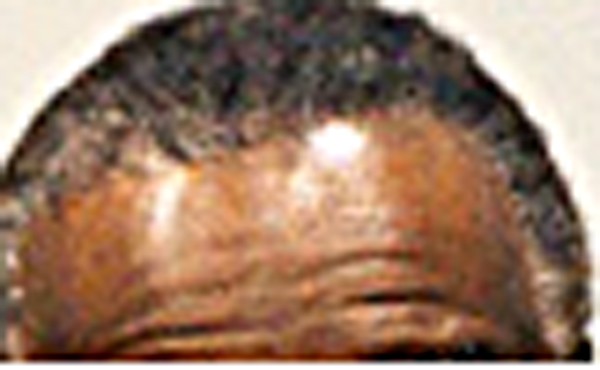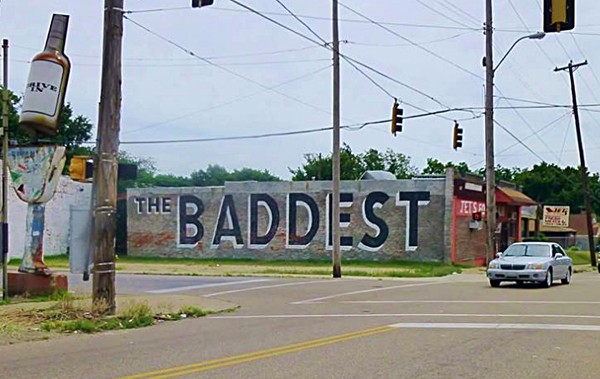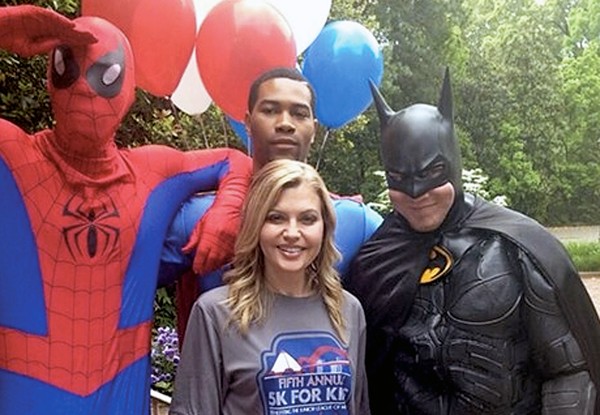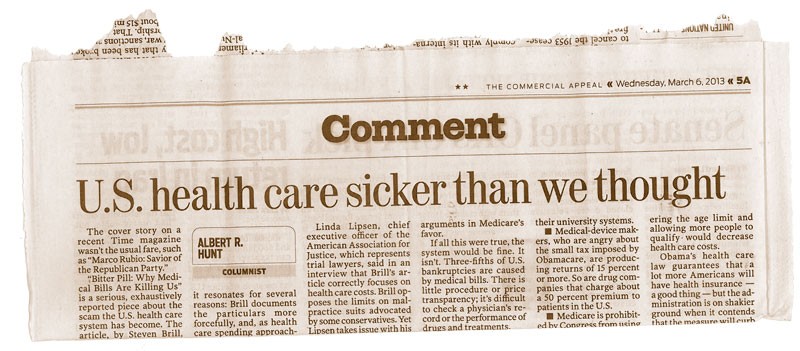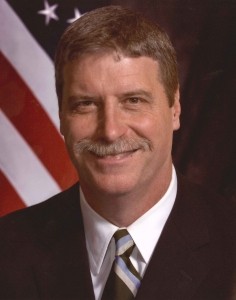Some things never change. The story former Flyer reporter Paul Gerald wrote in November 1994 about Janis Fullilove getting drunk and fighting with her husband could well have been written yesterday.
But, in some respects, Memphis is a very different place today than it was 25 years ago when the first Flyer rolled off the presses. We’ve scoured through the Fly-By sections (our news section, which used to be called City Reporter) in issues of the Memphis Flyer from the past 25 years to bring you a cross-section of news coverage to demonstrate how things have changed and how they’ve stayed the same. What follows are excerpts from those stories.
February 20, 1992
Riverboat Gambling in Memphis “Dead”
Riverboat gambling in Memphis, at least for now, is “dead,” according to Senator Steve Cohen.
Stillborn may be more like it. A state attorney general’s opinion that a constitutional prohibition on lotteries also applies to slot machines makes the issue moot, says Cohen. The constitution, of course, can be changed, but that takes some doing.
Riverboat gambling has replaced horse racing as the latest gambling fad in Mississippi, Iowa, Illinois, and other states. While Memphis would seem to have a leg up with its riverfront, music tradition, Mud Island, and other downtown tourist attractions, the idea of riverboat gambling hasn’t caught fire here despite support of the city administration and The Commercial Appeal. — John Branston
June 11, 1992
The Naked Truth
If you missed the comic strip “Outland” in Sunday’s Commercial Appeal, it’s because the paper — the same one that brought you editorial cartoons of gay soldiers wearing fishnet hose a couple of weeks ago — refused to run it because they found it offensive.
CA arts and entertainment editor John Sparks explains, “One panel showed a naked man’s rear … and we thought it was inappropriate for our family comic section.” — Richard Banks
August 6, 1992
Fred Smith Thinks Memphis Will Get NFL Team
Stay the course, Memphis. And we might just get a National Football League team when the NFL expands by two teams, possibly in the fall.
That’s the advice and prediction of Federal Express Chairman and President Frederick. W. Smith, who has been involved one way or another in the city’s chase for an NFL team for more than 15 years.
“I think we’re going to get it. I really do,” Smith told the Flyer Monday.
“We’ve got an NFL-quality stadium that’s paid for,” Smith said, adding that it is at least as good as the Tampa Bay Buccanneers’ stadium, which is a model of the Liberty Bowl. — John Branston
August 18, 1994
Grisham’s Empire Grows
With apparently no new worlds left to conquer, novelist John Grisham Jr. has turned publishing magnate. He’s made a substantial investment in the Oxford American, a critically acclaimed but finacially strapped literary magazine based in Grisham’s hometown of Oxford, Mississippi.
Already notable for its ability to persuade the South’s best writers — such as Eudora Welty, Barry Hannah, Roy Blount Jr., and Larry Brown — to contribute material for little or no remunerations, The Oxford American now plans to use its greatly increased resources to evolve into a full-scale national magazine, with bi-monthly publication, a full-time staff, expanded departments, and an advertising budget. Money appears to be no object — especially since Grisham was reportedly paid at least $6 million last week (another industry record) for the movie rights to his first novel, A Time to Kill.
— Debbie Gilbert
August 25, 1994
Conditions at Mud Island Pool Questioned
Visitors to Mud Island River Park could swim in the Gulf of Mexico pool in the early ’90s, but a Flyer investigation found the pool was in operation without chlorine.
The largest swimming pool in the state of Tennessee — which happens to be within sight of city hall — has on at least three occasions this summer been in operation without any detectable chlorine in the water. Additionally, the head lifeguard at Mud Island said systematic neglect has led to a generally unhealthy situation surrounding the pool.
Denise Thomas, 19, in her third season at Mud Island, said she has been aware for most of the summer that the chlorination system was not working properly at the 1.5-million-gallon pool. She said she voiced her concerns to superiors but received no answers.
The Memphis Flyer took water from the pool on August 12th and had the sample tested at Memphis Pool Supply Inc. at 2762 Getwell Road. The sample showed zero amounts of chlorine.
Thomas recalled an incident earlier this month when a 4-year-old boy suddenly dropped his trunks and began urinating in the pool.
“I don’t mean to be gross,” Thomas said, “but all little kids pee in pools.” —Dennis Freeland
September 15, 1994

Tom Lee Park Finally Nearing Completion
After years of planning, several construction delays, and one landslide, Tom Lee Park is starting to take shape. Within a month or so, it should actually look like a park, with trees, walkways, scenic overlooks, sod, a sprinkler system, and a pedestrian bridge over Riverside Drive at Ashburn-Coppock Park.
The final product, which should be pretty much complete by next year’s Memphis In May festival, will give Memphis one of the biggest and prettiest parks on the Mississippi River. — John Branston
November 10, 1994
Hockey Fans Boo Herenton
The Mississippi RiverKings used to be based in Memphis.
Hockey fans solidified their reputation for boorish behavior at the Memphis RiverKings home opener by lustily booing Mayor W. W. Herenton when he was introduced before the game.
Herenton and other guests, including Shelby County Mayor Jim Rout, the RiverKings mascot, and Mid-South Coliseum officials arrived on the ice in a stretch limousine, and the booing came from more than a few of the more than 7,000 fans.
The sad thing is that Herenton was going out of his way to show a little support for the three-year-old Memphis team and a sport, which, understandably, is not exactly close to his heart. —John Branston

November 24, 1994
Trouble Befalls Janis Fullilove
WMC radio talk-show host Janis Fullilove was arrested for drunk driving early Tuesday morning by Memphis police officers. According to the police report, Fullilove, 44, ran four red lights with a police car in pursuit and registered .19 on a breathalyzer test.
The report said Fullilove was “obviously intoxicated” when she got out of her car and was “talkative but crying uncontrollably at times.” She was taken to the Shelby County Jail.
On October 29th, Memphis police answered a domestic violence call at Fullilove’s residence at 3985 Old Getwell. According to a police memo, Fullilove, whose full name is Janis Fullilove Chalmers, was intoxicated when officers arrived at her house. Fullilove’s husband, Vernon Chalmers, told police his wife was “pregnant and highly intoxicated” and upset over his taking her car to work. —Paul Gerald
May 9, 1996

Kenneth Neill
Want A Free Flyer? One Dollar, Please
When it comes to tourists downtown, it’s not that there’s a sucker born every minute, it’s that many of the old suckers have never visited Memphis before.
The large tourist population has given a way for panhandlers to make money on Beale Street and along the Main Street Mall. But forget cleaning car windows with squeegees. That makes you look too pushy. And forget straight begging. That’s too demeaning. Plus you have to get a permit.
Instead, look enterprising by taking stacks of the Memphis Flyer from racks and selling them to tourists who don’t see the word “Free” printed in small letters underneath the publication’s logo until after they’ve given out a dollar or two.
“In a way, we’re flattered to think that people would value our product enough to pay for it,” says Flyer publisher Kenneth Neill, who has been approached himself by panhandlers hoping to sell him copies of his own newspaper. “But we hope by now everyone knows the Flyer is free.” — Phil Campbell
June 12, 1997
Phase One of Riverfront Project to Begin This Fall
The 1997-1998 state budget allocated $7 million to Memphis for riverfront development, which means construction can begin later this year along the Mississippi River downtown. But whether Memphis gets the deluxe version of the limited edition depends on the federal government’s willingness to contribute additional funding.
According to Benny Lendermon, the city’s public works director, it will take about $35 million to construct the entire project envisioned by Mayor W. W. Herenton and other riverfront supporters.
Plans call for a paved, lighted walking/biking path running from Tom Lee Park to the new visitors center just south of The Pyramid; renovation of the historic cobblestones; and a floating boardwalk with boat-rental concessions at the water’s edge. Beale Street would be extended west to connect with the southern tip of Mud Island, closing off that end of the harbor, and a dam a little farther north, near the visitors center, would enclose the space to create a 30-acre lake for public use. — Debbie Gilbert
April 30, 1998
In 1998, Memphis hosted the annual Association of Alternative Newsweeklies (AAN) Convention, a trade event for papers like the Memphis Flyer. While he was here, the editor of the Albuquerque newsweekly was kidnapped.
Editor’s Attackers Are Awaiting Trial
Michael Henningsen can’t forget Amnesia. And Alexius Montgomery and James Gilmore probably won’t either.
At the end of September, Montgomery pleaded guilty to kidnapping and assaulting Henningsen, a senior editor of an Albuquerque newsweekly. The journalist was in Memphis for the annual convention of the Association of Alternative Newsweeklies hosted by the Flyer. After getting out of his car in Amnesia’s parking lot on Poplar, Henningsen was attacked by Gilmore and Montgomery, who allegedly struck him in the head with a chunk of asphalt and shoved him into the trunk of his rental car. The men drove him to an ATM, beat him again, and made him take money from his account. The alleged kidnappers then drove to Mississippi where a high-speed chase with police eventually ended in a car wreck in Memphis. Henningsen was in the trunk of the car, but was uninjured in the crash. He was hospitalized briefly for head injuries.
Henningsen has a wry sense of humor about the incident — the 6’4″ editor was quoted in the Flyer as saying that the next time he rents a car it’s going to be a vehicle with a larger trunk. But the crime has taken a toll on him emotionally. — Ashley Fantz

September 3, 1998
Curbside Program Still a Work in Progress
The city of Memphis has launched an advertising blitz urging people to recycle, but at least a few Memphians have complained that their curbside recycling bins aren’t getting emptied.
“It’s discouraging when we hear things like this,” says city recycling coordinator Andy Ashford, who acknowledges the system isn’t perfect yet. “As massive as this change has been, there have been problems.
“For a city this size, we need to be doing about twice what we’re doing now [in the percentage of residents who participate in recycling],” he says.
— Debbie Gilbert
November 19, 1999
Bars, Restaurants Come, Go
Going into just its third week of operation, the Blue Monkey, next door to Molly’s La Casita at 1999 Madison, is a hit with Midtown barflies. Chief among its attractions are the gourmet pizzas and the lovingly restored 100-year-old wood bar. But the Monkey had better enjoy the attention in light of some recent and upcoming changes in the city’s nightlife.
Downtown Memphis will have two new dance clubs in the coming months. Along Cotton Row at 94 S. Front … work is almost done on the Zoo, a five-story nightclub that will feature dining and dancing.
Meanwhile, developers associated with the departed Neon Moon are working on refurbishing the Lonesome Dove, an under-utilized Western-themed party room at 395 S. Second. — Mark Jordan
December 12, 1999
Library Doomed
The Main Library at Peabody and McLean is not long for this world. The city council has decided the building would be too expensive to maintain as a branch library after the new central library opens on Poplar Avenue. Instead, the old building will be torn down and replaced with private housing. — Heather Heilman
May 13, 2002

Prince Mongo’s house on Colonial
By the Book
For anyone wanting to imitate the decor of Prince Mongo’s Colonial Acres home, as initially reported in last week’s Flyer, city officials say it is your choice.
The “palace” of the prince (real name: Robert Hodges), at 925 Colonial, includes such front-yard amenities as animal heads, Halloween decorations, streamers, and a “bean poll” to pick your least-favorite politician.
“Every day, it’s something different,” says Jennifer Tobias, who lives in the neighborhood. “He currently has a collection of white chairs in the yard, and last Saturday, a group of elderly people came and sat in the chairs all day long. I don’t know what he was trying to say with that. We don’t want him to define the neighborhood.”
But Tobias and other residents can complain about Mongo’s antics until they’re blue in the face. According to the Building Department of Code Enforcement, homeowners can decorate their property as they see fit. — Janel Davis
Going Down in Germantown
The national tour of playwright Eve Ensler’s bona fide phenomenon The Vagina Monologues opens at the Germantown Performing Arts Centre on June 25th with Margot Kidder as the star vagina. Although Ensler’s play — and the movement to end violence against women that has grown up around it — is now seven years old and has been produced by over 800 companies worldwide in the past year alone, the surprisingly clinical name still carries a certain amount of shock value. A recent letter to The Commercial Appeal from an angry Germantown woman even declared The Vagina Monologues to be the work of Satan.
“This happens in every town the show goes to,” Ensler says. “How can anybody think of the vagina as Satan? What do vaginas represent? Life. It’s where we come from.” — Chris Davis
July 26, 2002
Last year, the Midtown Stewart Brothers closed its doors for good. They still blamed the Madison trolley line for their demise.
MATA vs. Madison
“Business has picked up some, but we are still down by at least a full 25 percent,” says James Dempsey Sr., owner of Stewart Brothers’ Hardware, which has operated at the corner of Madison and Cleveland since 1937. “I get calls from people every day saying that they were going to come down but they just think it’s too hazardous.”
And just why do people think it’s too hazardous?
Because in spite of efforts to keep Stewart Brothers’ parking lot open to the public, trolley construction has made driving down Madison an “extremely confusing and frustrating situation.” — Chris Davis
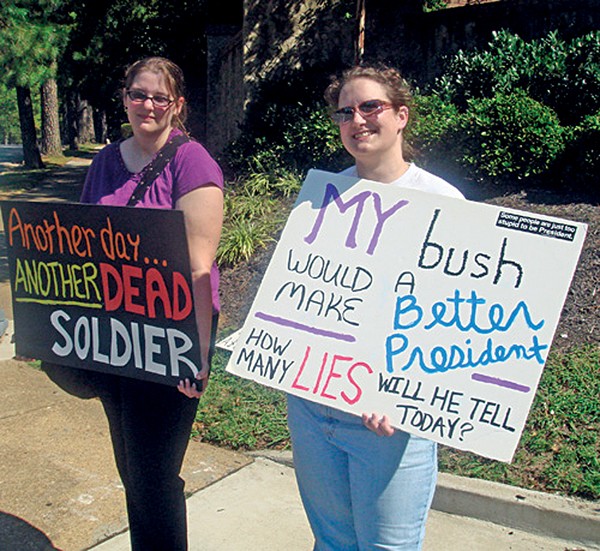
January 27, 2005
Marching in Memphis
About 25 people are standing at the northeast corner of Poplar and Highland holding signs that read, “No War” and “Not One Billionaire Left Behind,” waiting for the Mid-South Peace & Justice Center’s inauguration-day protest march to begin. A middle-aged man and two younger women are learning how to make a giant papier-mâché dove — with bedsheet wings — appear to fly, while others are walking around passing out peace bracelets.
“We’re here today to make sure Memphis is aware that there are still people out there who, despite what mandates Bush thinks he has, don’t agree with his policies, and we’re going to actively, nonviolently defy them,” says Jacob Flowers, director of the Mid-South Peace & Justice Center.
— Bianca Phillips
July 26, 2006
Identifying Jane Doe
The Mall of Memphis operated in the Bluff City from 1981 to 2003 and was demolished in 2004.
The building may be demolished, but the Mall of Murder is still living up to its nickname.
After two skeletons were found at the former Mall of Memphis site earlier this month, medical examiner Karen Chancellor was charged with identifying the victims and their causes of death.
The first skeleton, discovered by groundskeepers, is still unidentified at press time, but the second set of remains — discovered by police two days after the first body was found — was identified as 49-year-old Kathy Higginbotham.
Higginbotham was reported missing last November after her daughter dropped her off near Perkins and Knight Arnold. She was never seen alive again. — Bianca Phillips
August 3, 2006
Marijuana, Munchies, and Money
A supreme pizza and a bag of weed can make a pothead’s day. And it’s an even tastier deal when the entire purchase can be made with a debit card.
The Little Caesars on Byhalia Road in Collierville must have seemed like a dream for hourly employee — and alleged marijuana dealer — Steven Barton. But since the Collierville Police Department (CPD) busted Barton in June, the situation has become a nightmare for Little Caesars franchise owner Martin Mathews.
After Barton’s arrest on June 15th, the restaurant’s operating account was placed on hold by Collierville Judge William Hall. That’s because, on at least one occasion, Barton ran a debit card for someone’s marijuana purchase, taking $12 in cash from the Little Caesars cash register. Since funds from Barton’s pot sales were mixed in with the Little Caesars account, almost $240,000 was seized as drug money.
— Bianca Phillips
July 5, 2007
Sign of the Times
In 2004, 15-year-old Westside High School student Tarus Williams wanted to be a member of G-Unit, a small student-led gang. But in order to gain entry, Williams had to fight another member in the school bathroom.
Williams never joined the gang. During the fight, his heart ruptured after he was thrown into a bathroom stall.
Such fights — along with an increase in citywide gang violence — have led to a tougher anti-gang policy for Memphis City Schools (MCS). Starting this fall, students caught wearing gang colors, throwing gang signs, or participating in any type of gang activity will face expulsion. — Bianca Phillips
September 20, 2007
On Camera
In the movies, prison visits often end as visitors and inmates place their palms on either side of a glass panel separating convicts from the public. But as of last month, male inmates at the Shelby County Jail are no longer able to get so close to loved ones.
These days, jail visitors talk to inmates through a computer monitor. Thirty video visitation stations have been installed in housing units at the 201 Poplar facility, and another 31 will be operational soon.
“As opposed to moving inmates a few floors, now they can move a few steps to talk on a computer monitor that connects them instantly to a family member or attorney,” says Steve Shular, a spokesperson for the Shelby County Sheriff’s Office. “Every time you take an inmate out of a cell and move him off the floor, that movement creates a potential safety issue,” Shular says.
— Bianca Phillips
March 25, 2010
Fire Sale
On January 4th, 66-year-old Johnny L. Wicks opened fire outside a Las Vegas courthouse, killing a security guard and wounding a U.S. marshal. His weapon? A Mossberg 500 shotgun confiscated by the Shelby County Sheriff’s Office several years ago.
The sheriff’s office traded the gun, along with about 1,000 other confiscated weapons, to a registered gun dealer in 2005 in exchange for new service weapons, a year before Sheriff Mark Luttrell instituted a policy to destroy all confiscated guns. But a new state law that went into effect March 3rd requires the sheriff’s office to reverse that policy and resale or trade any guns taken from criminals. With the new law, the only weapons that can be destroyed are those that are damaged in some way. — Bianca Phillips

Mario Jackson & Keshun Douglas
July 15, 2010
Great Escape
Memphians Keshun Douglas and Mario Jackson might not know one another, but they have more than a few things in common: They’re both 23 years old, both were charged with felonies, and until last week, the men were being held at jails or prisons in Shelby County. Now both men are on the run.
In separate incidents in two days, Douglas and Jackson managed to break free from guards at the Regional Medical Center of Memphis, commonly known as the Med.
On Wednesday, July 7th, Douglas, who was serving time for property theft at the Shelby County Corrections Center, snuck out of a prison transport van while six other inmates were being unloaded in front of the Med. Douglas was being taken to the hospital’s prison ward for lab work.
The following day, Jackson was in the Med’s prison ward when he overpowered two Shelby County corrections deputies. Jackson, who was arrested on charges of aggravated kidnapping, aggravated robbery, and aggravated burglary, escaped after a trip to the restroom.
Both men remained at large at press time, and both incidents are being investigated. — Bianca Phillips

